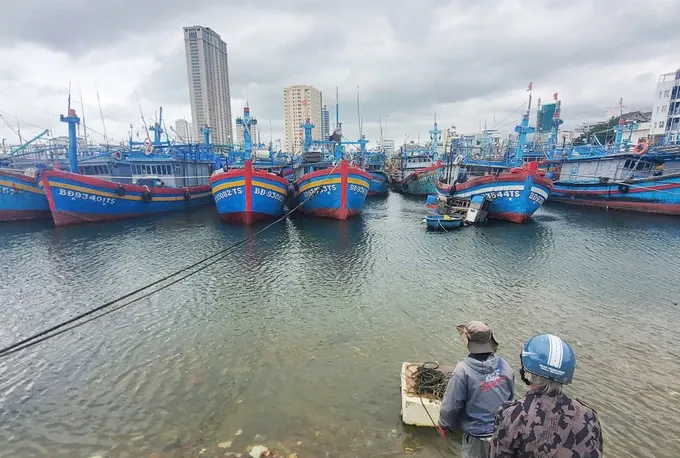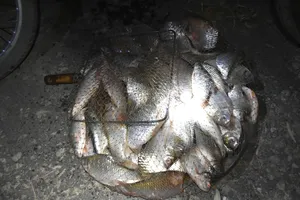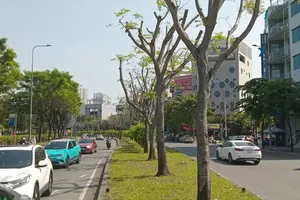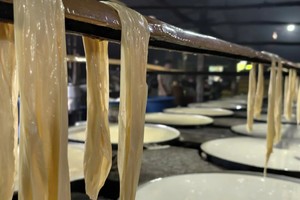
43-year-old fisherman Vo The Quyen, who has fishing boats parked in Hai Cang Ward of Quy Nhon City, expressed his anxieties that Quy Nhon’s fishing community is diverse, but predominantly consists of low-income individuals, many of whom are older, aged 45-60. He himself relies on fishing and mooring near Quy Nhon City for a modest but sufficient income, earning VND300,000-500,000 (US$11.8 – 19.7) daily, enough to support his family members. Relocating to De Gi would make his current livelihood unsustainable as his small boat is not suited for longer voyages. He has implored provincial leaders to carefully consider the diverse circumstances of the fishing community, minimizing hardship, particularly for small-scale operators like him.
54-year-old Nguyen Van Canh, owner of fishing vessel BD 61306 TS, recounted his 30 years of fishing in the waters off Quy Nhon City, witnessing numerous planning changes and relocations of fishing villages and anchorages to accommodate urban development. He fears that at his age, leaving the sea would leave him with no viable alternative for earning a living.
Van Cong Viet, a 58-year-old fisherman and past representative at an international fisheries conference, compared Quy Nhon City’s situation to other tourist cities like Da Nang and Nha Trang. He argued that those cities successfully integrate fishing ports and services within their limits, supporting both fisheries and tourism. Quy Nhon, with its expanding tourism sector and seafood demand, risks economic harm by moving its fishing port.
Viet suggested alternative locations like Nhon Hoi Port or the Thi Nai Lagoon, citing De Gi Port’s narrow entrance and tidal dependency as risky and inconvenient, particularly during storms. He believes Nhon Hoi or Thi Nai would offer safer and more accessible conditions, as they connect to the Quy Nhon deep-water port, benefiting both fishing operations and storm shelter.
Many fishermen and seafood traders in Quy Nhon City emphasized the Quy Nhon fishing port’s long-standing tradition. The port’s vibrant early-morning fish market is a distinctive element of Quy Nhon’s maritime culture, with significant potential for development.
62-year-old Tran Thi P.L., a fish wholesaler at the port who supports 50-60 regular fishing vessels, expressed her concern: “Relocating the boats will have a cascading effect, displacing numerous related professions: wholesalers, laborers, boat builders, dockworkers, and crew members. Furthermore, the port serves as a hub for vessels from across Central Vietnam, providing anchorage, seafood trading, and storm shelter. Relocation to De Gi Port might deter these vessels from coming to Binh Dinh Province, resulting in substantial losses.”
Vice Chairman Huynh Cao Nhat of the Binh Dinh Province Fatherland Front Committee stated that the committee recently conducted a policy review regarding the boat relocation support. While most delegates agreed on the need to create space for marine economic development and larger vessels, they also stressed the importance of thorough and repeated multi-sectoral assessments to avoid overlooking any affected parties.
“The draft support policy proposes assistance for vessel owners who wish to scrap their boats or change careers, including boat buy-back programs and career transition support (e.g., retraining costs, housing allowances, and living expenses),” the Vice Chairman explained. “The policy also aims to address the needs of other affected individuals, such as boat owners, crew members, traders, port business owners, dockworkers, and boat builders residing in Quy Nhon City.”
Director Nguyen Huu Nghia of the Binh Dinh Province Fisheries Department indicated that the draft boat relocation support policy requires an estimated VND200-250 billion ($9.8 million). The draft has been submitted to the Provincial Party Committee’s Standing Committee for review and will then be presented to the Binh Dinh Province People’s Council for approval.
The Binh Dinh Province Party Committee has emphasized the need for careful and comprehensive consideration of the people’s opinions and aspirations. Following the project’s implementation, the province will invest in fisheries infrastructure and logistics to establish a major seafood logistics center at De Gi Port.
The Ministry of Agriculture and Rural Development is currently investing VND320 billion ($12.6 million) in a 65-hectare storm shelter anchorage at De Gi Port, with a capacity of 2,000 fishing vessels. The project also includes dredging the 4,200-meter main navigation channel, involving approximately 214,000 cubic meters of dredged material.
The project plans to relocate 602 vessels, ranging from 6 to 24 meters in length, to De Gi Port in 2025. It will also affect approximately 9,000-10,000 vessel visits annually from other central Vietnamese provinces that currently utilize Quy Nhon fishing port, where 800-1,000 vessels regularly seek shelter during the storm season.
























